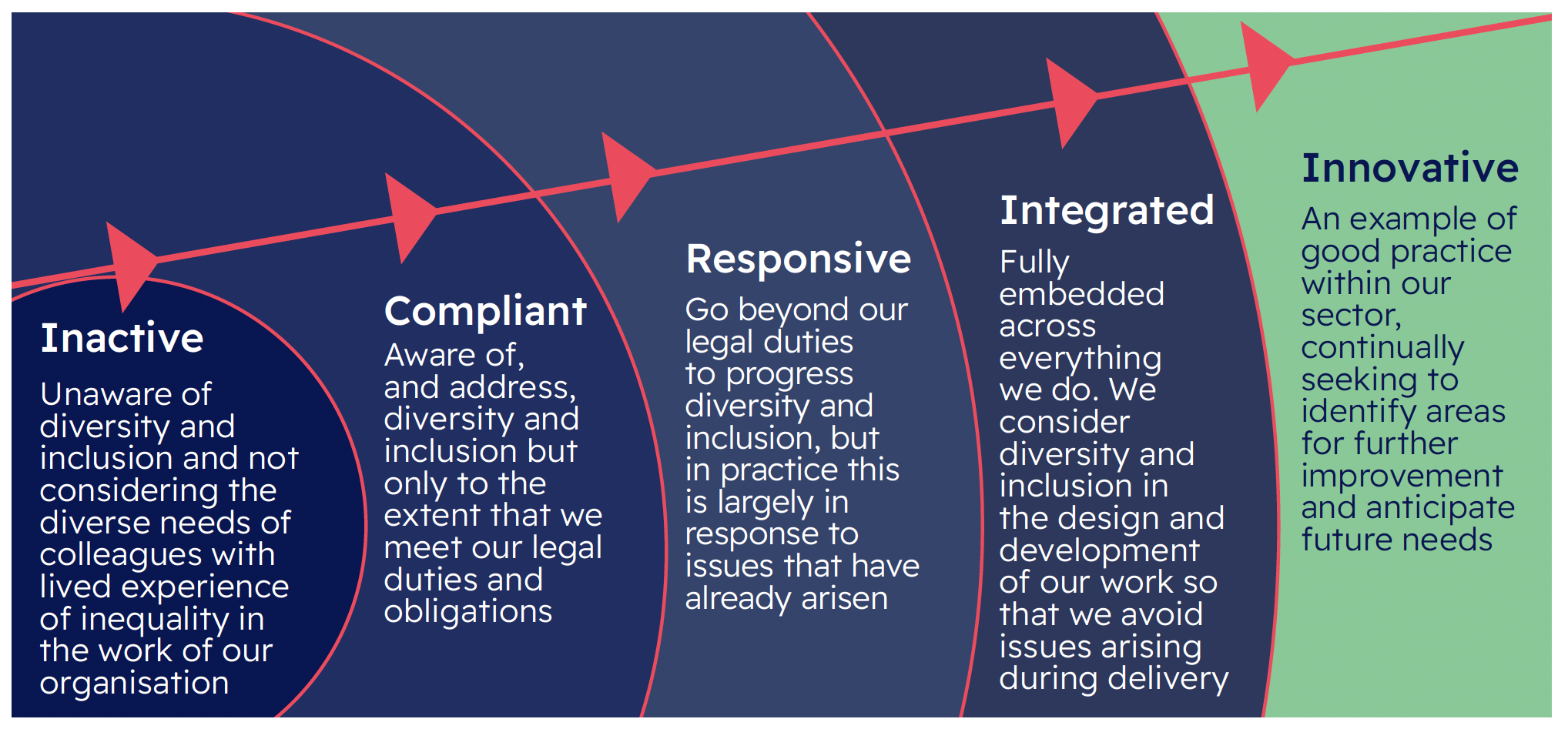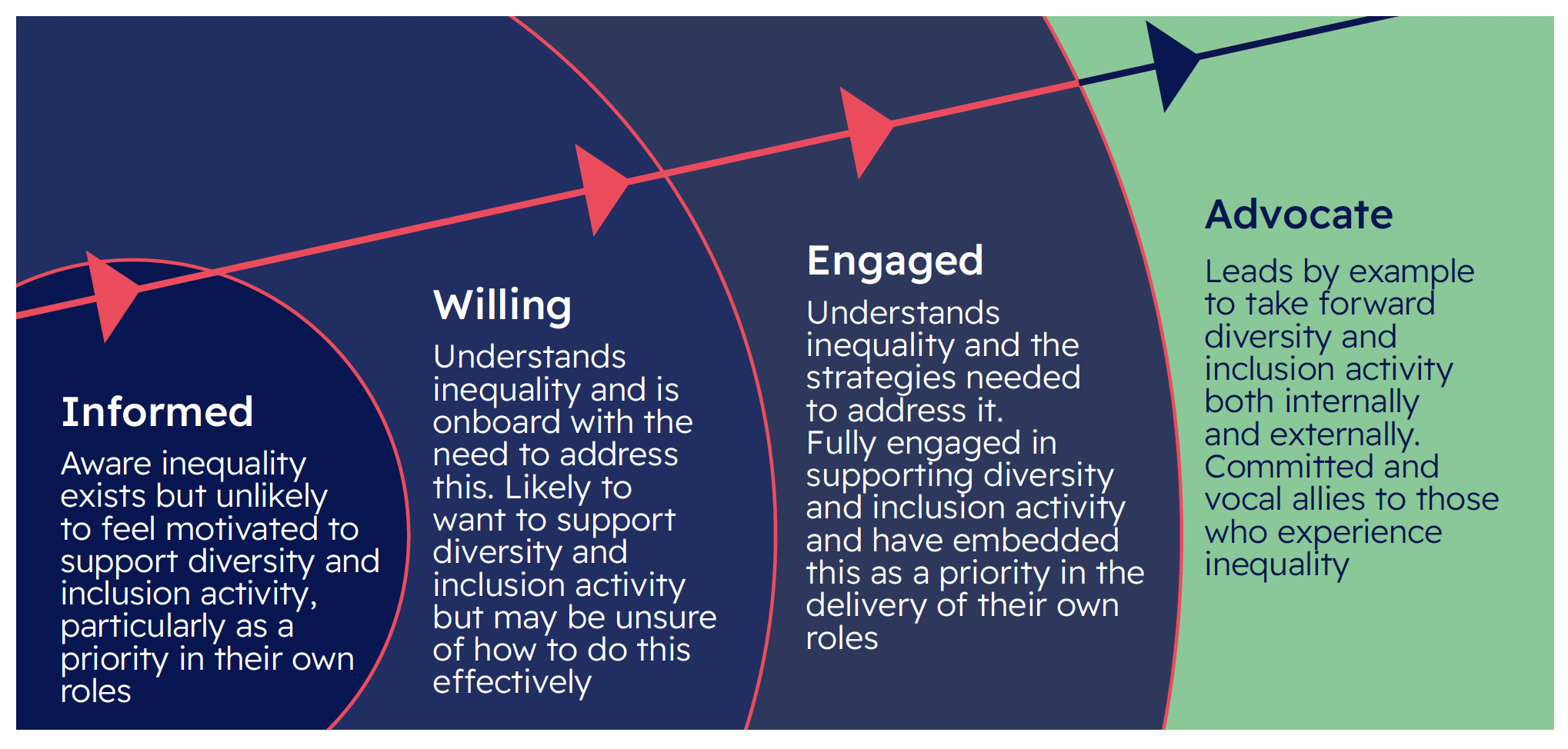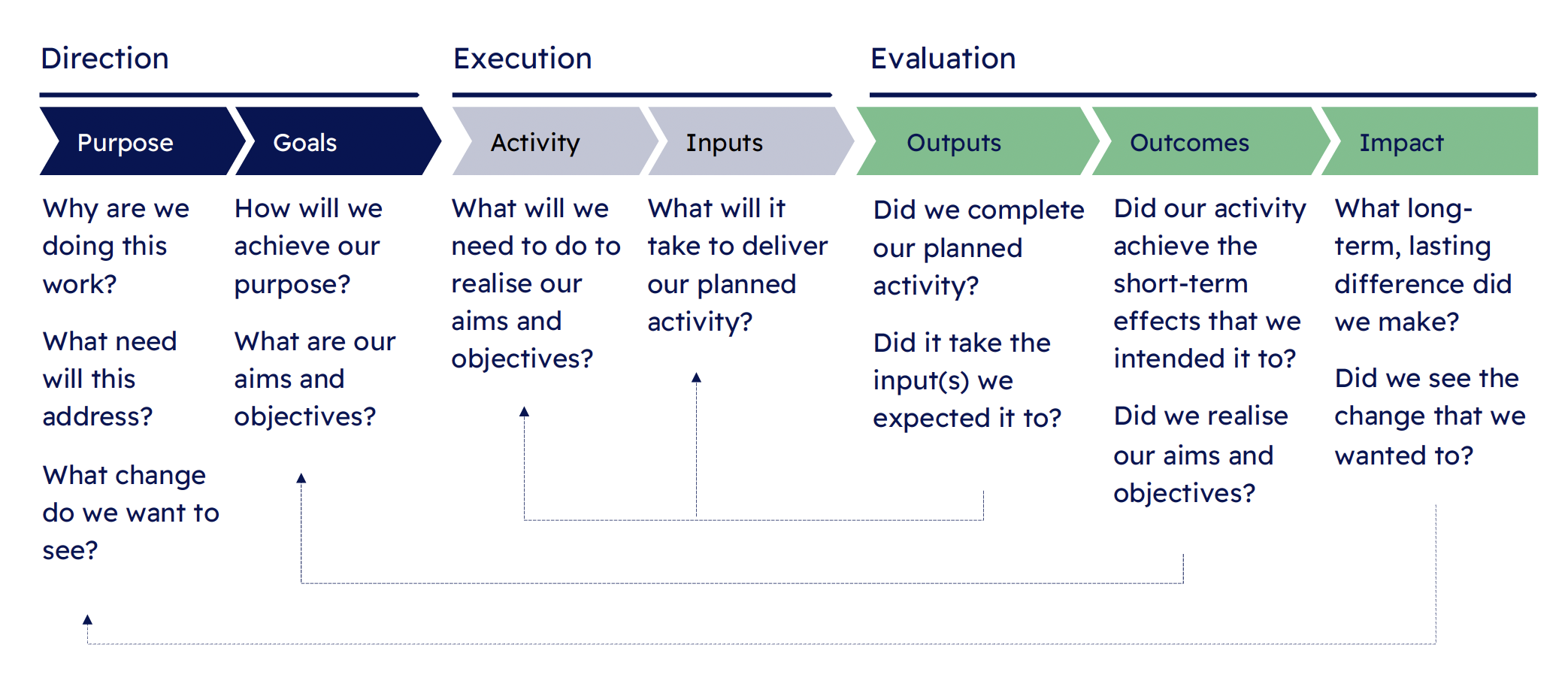Measuring our progress and evaluating our impact
Published: 11 December 2023Freedom of information class:
In 2022, we highlighted that we are on a journey of improvement in relation to diversity and inclusion. A key element of evolving our approach was to better define this journey and ensure we can track our progress and evaluate our impact.
Defining our diversity and inclusion journey
Our journey is defined by understanding the change we want to see across our organisation. The change that will allows us to achieve our goal of being a diverse and inclusive organisation for our colleagues and customers. To ensure this change is effective and sustainable, we recognise that it will take time and involve small steps. As such, we have developed maturity models to articulate the key milestones in our journey.
Since our pillars of diversity and inclusion focus on both our behaviours as an organisation and the buy in from our people, we have developed two maturity models to track our progress against both these key elements of change.
Our organisation
This model will allow us to track our progress against the organisational behaviours we are seeking to change.
As a public sector organisation, a key step in our journey is to ensure that we are compliant with our legal duties under the Equality Act (2010). However, we want to go beyond this to provide a fully inclusive working environment for all colleagues.
Change takes time and is more likely to be sustainable if we make steady progress, recognising small steps along the way. As such, our model includes five stages with each stage building upon the one before.
Different functions across RoS may be at different stages of this journey. The upcoming section on measuring our impact provides more detail on this.

Our people
This model will allow us to track improvement in the buy-in of our colleagues to support our diversity and inclusion agenda.
Creating a positive culture and sense of community for those with protected characteristics requires understanding, positive attitudes, and support from all colleagues. People will naturally be at different stages in their awareness of inequality and their attitudes towards addressing this.
We will aim to ensure that we move all colleagues to a starting position of being informed and support them to reach the level of being an advocate.

Measuring our impact
It is essential that we have appropriate and robust data to measure our progress and evaluate our impact. Our available data includes HR and organisational data as well as survey findings, for example the Civil Service People Survey. We will continue to improve the data we have and ensure effective use of this to inform our activity.
Measuring the impact of our actions
Each action in our plan will be measured to understand its individual impact and inform our future activity. This will also ensure we focus on what works and the actions that are the most efficient and effective in driving forward our agenda.
The combined impact of all our actions will also be monitored by our Diversity and Inclusion Delivery and Steering Groups. We have identified a set of key performance indicators to monitor on a 6-monthly basis and report on annually. These measures will allow us to track our overall progress. We will use this evidence to evaluate where we are in our journey and which stage of our maturity models we have reached.
Our evolution strategy
The benefits that we deliver from our actions need to be considered within a strategy. The benefits and impact should relate back to our intended purpose and goals. We will also consider the input required to deliver each action so that we focus on efficiency as well as effectiveness.

Evaluating our impact in the wider context
To fully understand our progress, we also need to evaluate our impact within the external context in which we’re working. As such, we will identify appropriate comparisons for our key performance indicators, such as census data, labour market information, and benchmarking from the Civil Service People Survey.
